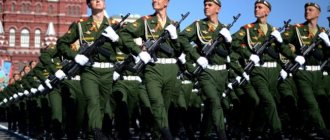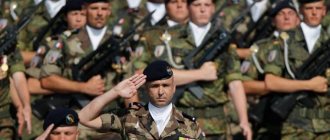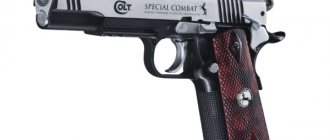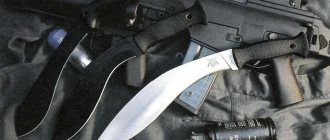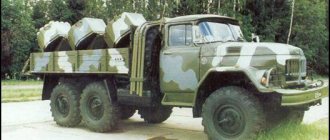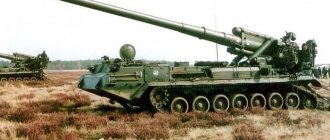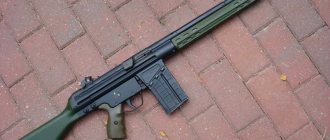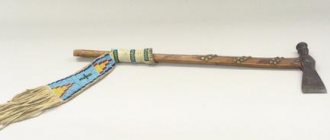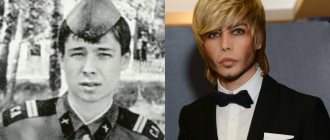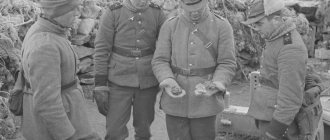DPRK Army
North Korea is a closed state, information about the standard of living there is strictly classified, and the rare tourists who were able to obtain permission to cross the border of the Democratic People's Republic of Korea are shown only those objects that the authorities consider appropriate to show. In terms of its regime, this country is similar to the Soviet Union of the 40s of the 20th century. Today, such a regime in any country seems incredible, but in North Korea, labor concentration camps are thriving and mass public executions are the norm.
The whole world remembered the year 2017 for the threats of North Korean leader Kim Jong-un, who said that he was ready to launch a nuclear strike (with North Korean-developed weapons) on South Korea. In response to this statement, US President Donald Trump promised the Americans to deal with the North Korean army once and for all, sending a nuclear submarine to the port of South Korea to confirm his words.
Although the strength of the US Army is many times greater than the troops of a possible enemy, the Americans do not dare to attack an unpredictable enemy who has nuclear weapons with unknown power potential. Since North Korea is a closed country, it is incredibly difficult to obtain reliable information about the composition and strength of the DPRK Armed Forces.
The history of the emergence of the DPRK army
The Korean People's Army appeared in 1934, although its prototype (the Anti-Japanese People's Guerrilla Army) appeared back in 1932. The ANPA was formed from Korean partisan units that fought against the Japanese occupiers in the territories of Manchuria.
Although this data is not confirmed by anything, historians of the republic claim that the troops of the Korean People's Revolutionary Army (KPRA) participated in all military operations on equal terms with the Chinese revolutionary forces and without their participation. Of course, there were many Koreans among the Chinese partisans, but they could not be called an army.
To support their version, Korean historians point to the fact that the founder of the North Korean state, Kim Il Sung, was one of the military commanders of the KPRA. The future leader of North Korea was indeed the commander of a guerrilla detachment, but the detachment was officially considered Chinese.
If you believe the history of North Korea, then the KPRA troops took part in the battles against Japan, and the victory of the Soviet Union was the work of the KPRA Armed Forces. This point of view is supported only by residents of North Korea, and military documents of the USSR say that although Korean and Chinese partisans systematically prepared for military operations in territories controlled by Japan, their landing was prevented by the premature surrender of Japan.
After the Potsdam Conference, Korea was divided into two parts:
- North Korea (which Kim Il Sung actually began to rule), which is a zone of Soviet occupation;
- South Korea (led by Syngman Rhee), which was an American zone of occupation.
This division did not suit either side, which is why the outbreak of a military conflict was only a matter of time. After Kim Il Sung arrived in Moscow in March 1950 for a secret conversation with Soviet leader I.V. Stalin most likely made the decision to attack the southern part of the Korean Peninsula.
Before the start of the war, the strength of the Korean People's Army was approximately 100-150 thousand people. In 1953, when the war ended (although the end of the war was not officially announced), the North Korean armed forces had a strength of 263 thousand people. At that time, it was one of the most powerful armies in Asia (not counting the Chinese), which had real combat experience.
Main disadvantages of KPA
The DPRK armed forces can instill fear in a large number of states. However, the North Korean army has many shortcomings. Negative aspects of KNA:
- a small amount of fuel makes it possible to conduct large-scale combat operations for no more than 30 days;
- long-term defense of the capital of the DPRK is impossible due to the small amount of food;
- there are no means of the latest artillery detection, which reduces the effectiveness of shooting;
- an attack from the sea is repelled by outdated weapons, and ships in general do not stand out for their autonomy and maneuverability;
- there are no new air forces or air defense equipment, and the existing equipment makes it possible to repel an enemy attack for only a few days.
For all the shortcomings of the North Korean troops, they are one of the most powerful armies in the world. This is largely due to the fact that the country has numerous reserves of trained personnel ready to defend the country.
The negative aspects of the country's military structure, however, cannot exclude the fact that the DPRK army is capable of engaging in battle with the US army, and the presence of atomic weapons complicates the situation even more. Especially for countries that share borders with North Korea, i.e. China, South Korea and Russia.
You can feel the real effectiveness of the army of this state only in the conditions of a real war, but this is precisely what is feared all over the world. No country, including the United States, yet wants to openly enter into conflict with the leadership of the DPRK.
How is leadership carried out in the DPRK army?
Full leadership of the DPRK Armed Forces is exercised by the Defense Committee, headed by the Supreme Commander-in-Chief, who is the marshal and chairman of the State Defense Committee. The General Staff functions as an advisory center, and the headquarters of the air force and naval forces solve immediate problems facing the People's Armed Forces (PAF) of North Korea.
The People's Armed Forces of North Korea consist of the following types of troops:
- Korean People's Army, which consists of various types of ground forces;
- Air Force;
- Naval forces, together with special operations forces;
- Army Ministry of Public Security;
- Troops of the Ministry of State Security;
- Red Guard of Workers and Peasants (Workers and Peasants);
- Youth Red Guard;
- People's and training groups.
North Korea has universal conscription, which was popular in all countries of the former USSR. The length of service in the DPRK army ranges from 3 to 12 years (depending on the type of military service).
Although information on the number and percentage of North Korean troops is classified, the DPRK army parade, which displays the latest Korean weapons, gives a rough idea of the military power of the modern DPRK army.
Information problem
The North Korean army is completely classified, like the country itself. All information about the number of military personnel and available equipment is quite approximate. As a rule, this data is either official, that is, practically made public to deceive the enemy, under which the whole world is designated, or from the yellow press and secret structures - sources that also cannot be particularly trusted. However, there is nothing to choose from, since there are virtually no other sources with information about the North Korean army.
North Korean Ground Forces
The North Korean ground forces are the largest part of the Korean People's Army. Their total number is about 950 thousand people. The period of service in the ground forces is at least 5 years (maximum 12) and this is only conscript service. In the North Korean army, a large percentage of the military personnel are women. According to various sources, their number ranges from 20 to 50 percent.
The total number of tanks in the DPRK army is about 4,000 vehicles of various types. In addition to combat vehicles of various types and artillery pieces, the main pride of the DPRK army is the installation of operational-tactical and tactical missiles.
Most of the ground forces are on high alert in the demilitarized zone. In addition to the huge accumulation of military equipment and military units, this area is distinguished by a huge concentration of various bunkers and tunnels, which most likely lead to the territory of South Korea.
Although the DPRK army is distinguished by a large number of military equipment, 80 percent of it is outdated models of Soviet military vehicles from the 60-80s. Only in recent years have the ground forces begun to be equipped with new developments of their own design.
Number
The lack of reliable information especially affects the determination of the size of the North Korean army. Most sources on the Internet start from 1 million people as a certain milestone. But otherwise the data varies from 850 thousand to one and a half million and above. At the same time, the army has a very modest budget. So, in 2013 it reached only five billion dollars. Compared to world leaders, this level is extremely low.
However, according to experts, the army of this country is currently in fourth position (some, however, give it fifth) on the planet in terms of its numbers. International experts sometimes give it primacy in this indicator even in comparison with Russia.
The reserve is approximately 4 million more soldiers and officers. The mobilization reserve numbers 4.7 million soldiers and officers, mob resources – 6.2 million soldiers and officers, and about 10 million soldiers and officers fit for army service. And this is with a population of North Korea of almost 25 million people. Thus, approximately half of North Koreans can serve in the country's army. It will be difficult for the conquerors, unless there is betrayal, as was the case with Gaddafi in Libya or Hussein in Iraq.
These large armed forces are constantly on alert. Over the past decades, the DPRK has become a continuous militarized camp, tensely awaiting attack from long-time enemies.
North Korean Air Force
The DPRK Air Force is part of the Korean People's Army. As is the case with ground forces, the main combat units that make up the Korean aviation fleet are old models of airplanes and helicopters produced in the 50-70 years in the Soviet Union. This equipment was actively supplied to North Korea as part of military assistance. There are many Chinese-made planes and helicopters of later years. The main pride of the air force of the DPRK army is the 4th generation MIG-29 fighters, which were produced in the 80s of the 20th century.
Although the DPRK Air Force is one of the leaders in the world in terms of the number of combat air units (according to unofficial data - about 1,600 aircraft), most of these planes and helicopters will not be able to conduct a full-fledged battle with modern US or Russian fighters, since their service life has long been exhausted.
All air passenger and cargo transportation in North Korea is carried out by the Air Force. All transport aircraft are not only assigned to the military departments, but are also piloted by military pilots.
The helicopters at the disposal of the DPRK Air Force are represented by many machines (about 300 units) of various types. The main pride among them is the huge MI-26 transport helicopters.
Military pilots and other personnel of the Korean Air Force are among the most respected people in the country. To pilot a military fighter, a pilot must not only have excellent health, but also be technically and mentally prepared.
Ideology
Of course, the main factor of military power is the quantitative composition of experienced personnel and modern equipment. But the moral level of the DPRK army and the effectiveness of the ideology that supports the desire to fight against the enemy in soldiers and officers cannot be belittled.
The leading ideological appeals of the DPRK are the Juche ideas. Literally, “chu” means “person, possessor,” and “che” means “natural, natural.” That is, “Juche” indicates a situation where a person can be the owner of both himself and the whole world in general, or, more briefly and literally, “reliance on one’s own strength.” North Korean ideology in the DPRK and to some extent in the USSR was considered the ideas of Marxism-Leninism combined with Asian philosophy.
However, we are not talking here about theoretical postulates, which are also quite controversial, but about the fact that in North Korea there is an official ideology that is extremely widespread among the population and serves as a support for the ruling regime.
The term "songun", that is, "everything for the army", is a practical aid to Juche. It defines the KPA as the leading force in all state affairs and in the division of national wealth. “The army is in the lead” is the main thesis of the top leadership of North Korea, which is consistent in everything:
- In the political sphere of the state: “The army is in a leading position in politics.”
- In the national economy: “The army is in a leading position in economic activity.”
- In the ideological sphere: “The army has a leading position in ideology.” This principle is central to the entire ideological concept.
Songun identifies the armed forces in the country as a structure with state functions that occupies leading positions in the state. According to the ruling elite, the army in North Korea is the “Great Repository of Power.”
North Korean Navy
The North Korean Navy is represented by two fleets:
- East Sea Fleet, which is designed to operate in the Sea of Japan;
- Western Sea Fleet, designed for combat operations in the Korean Gulf and the Yellow Sea.
In total, from 45 to 60 thousand people serve in the Navy of the Democratic People's Republic of Korea (although these data are not accurate). The conscription period in the Navy ranges from 5 to 10 years. It should be especially noted that military service in North Korea is not only an honorable duty for every citizen, for which they prepare from childhood, but also the only way for villagers to get out of poverty.
Pyongyang is home to the naval headquarters. The coast guard forces are considered a significant part of the entire North Korean navy. They are capable of conducting the following combat operations:
- Border protection in the coastal area;
- Offensive and defensive operations;
- Mining of the territory;
- Standard raid and combat operations.
It should be noted that the main task of the DPRK Navy is to support ground forces. This support should be expressed in operations to counter the South Korean fleet.
The submarine fleet occupies a special place in the DPRK Navy. According to the latest data, the North Korean submarine fleet is represented by the following types of submarines:
- About 20 large Project 633 submarines;
- 40 San-O submarines;
- Yono class midget submarines.
Despite the fact that the DPRK's submarine fleet is represented by old submarines, even the ultra-small Yono class submarines are quite capable of sending a modern warship to the bottom, as they perfectly demonstrated in 2010, when the Cheonan corvette, belonging to the South Korean fleet, was sunk. Although the DPRK denies any involvement in this incident, an independent investigation claims that it was the North Korean submarine fleet that was responsible for the death of the corvette.
As is the case with the Air Force, all cargo ships are owned by the Navy.
Weapons production
The parade of the armed forces in this country is a truly vivid picture. Despite international sanctions, the DPRK is still able to produce a variety of models of equipment and master the production of others.
The armament of the North Korean army is based on a powerful military-industrial complex. The country's military industry makes it possible to produce an annual quantity of weapons and equipment in the amount of 200 thousand machine guns, 3 thousand artillery systems, several hundred tanks and other types of military equipment. In addition, the country produces various types of naval vessels.
In the DPRK, there are 17 enterprises producing small arms and artillery, 35 enterprises producing ammunition, 5 enterprises producing armored vehicles, 8 aircraft factories, 5 enterprises producing warships, 5 enterprises producing guided missiles, etc. In addition, some civilian enterprises can be quickly and at low financial cost converted to produce military products. More than 180 defense factories operate underground in mountainous regions.
The production of North Korean missile systems makes it possible not only to fully supply its army with surface-to-surface missiles, but also to export them to other countries. Work is being carried out at a rapid pace in the field of creating intercontinental ballistic missiles and nuclear technologies.
The only thing that is not produced in the DPRK is military aircraft. Although if foreign components are supplied, their assembly in-house in the DPRK is realistic.
DPRK Rocket Forces
According to the South Korean television and radio company KBS, the DPRK missile forces are armed with a complex of ballistic missiles consisting of three belts, placed taking into account their range. Management of this complex is entrusted to a new department called the Strategic Missile Command. KBS received this data from a certain secret document from the DPRK. It is not clear what kind of document this is and how it fell into the hands of representatives of the television and radio company. It is not known whether this information is correct, but it is a fact that with Kim Jong-un coming to power, missile forces became a priority.
The missile belts are arranged as follows:
- The first line of defense missile belt is located near the border with South Korea. It includes short-range ballistic missiles. These missiles are analogues of Scud missiles, which were modernized by North Korean designers;
- In the area of the capital of North Korea there is a second belt of medium-range ballistic missiles. The Nodon modification missiles are located there;
- The third belt of long-range ballistic missiles is located in the north of the state. In addition to the Taepodong 1.2 missiles, which have a range of 2 to 6.7 thousand kilometers, the DPRK is actively developing missile models that are capable of covering distances of up to 10-12 thousand kilometers, that is, they are quite capable of reaching the United States. It is possible that such missiles have already been created, which cannot but worry the US government.
According to South Korean experts, the total number of ballistic missiles in North Korea's arsenal is about 1,600, of which about 100 are intercontinental.
In addition to these missiles, multiple launch rocket systems and artillery systems, totaling about 5,000 units, were aimed at the capital of South Korea.
In 2012, during the launch of the Gwangmyeonsong-3 satellite into orbit, the Unha-3 rocket was launched. While North Korean officials claim it was a space exploration program, the US and South Korea claim it was a test of a new generation ballistic missile.
Structure of the armed forces
To date, 5 military branches are directly included in the structure of the DPRK army. Among them, ground forces stand out in size. Some sources include other structures that are quite small.
Most military branches are united into several lines of defense.
The first one is located on the border with South Korea. With the outbreak of a potential war, these troops are required to break through the enemy’s border line or prevent enemy formations from breaking into the rear areas of the country.
The next line of defense is located almost immediately behind the first. It combines infantry and mobile units. His activities are directly dependent on the current situation. If the DPRK begins hostilities, then the troops of the second line will begin to advance deep into the enemy’s defenses, right up to entering Seoul. When their country is attacked, the second line is obliged to eliminate enemy breakthroughs with counterattacks.
The goal of the third line is to protect the country's capital. In addition, it will be the training and reserve basis for the first two milestones.
The last frontier is located on the border with neighboring states. It is classified as a training reserve unit. It is also called the “echelon of last hope.”
The structure of the army was clearly copied from the Soviet one. This is also evident from the ranks of the North Korean army. They correspond to the Soviet rank system, and all innovations come from already existing titles.
North Korean special forces
North Korea's special forces are called DPRK Special Operations Forces. At their core, these troops are an analogue of special forces, and not the Soviet special forces, from which they were copied in the 60s, but the US special forces, which bears a similar name (MTR).
Since the troops of the Democratic People's Republic of Korea are in constant military readiness, this could not but leave its mark on the local special forces. Due to the fact that North Korean special forces only recently became a unified system, it should be considered only after the reorganization period of 2009-2010. Prior to this, the DPRK MTR was controlled by at least three organizations, which created enormous difficulties, since these organizations worked independently of each other. These organizations were:
- Operations Department;
- Office number 35;
- Intelligence Bureau under the Ministry of the People's Armed Forces.
After the reorganization, the new structure became an almost complete copy of a similar organization in the United States. It includes 6 different bureaus that are responsible for specific tasks and are independent structures:
- The first bureau is called the operational bureau. Its task is to control special agents in South Korea, monitor refugees from the south of the country, and eliminate persons suspected of treason and sabotage. In addition, this bureau is engaged in organizing sabotage, which can also be carried out at sea, since the bureau has the appropriate bases. This bureau includes: Headquarters, naval training centers, escort amphibious units, special schools and a preliminary and final training component. The staff of this bureau numbers about 7,000 people;
- The second bureau is the intelligence bureau. Its staff is the largest (about 15,000 people). In addition to the headquarters, it includes: the foreign intelligence department, the political department, the special and training departments and the naval department. Military units of the 2nd Bureau include 3 sniper brigades, and five reconnaissance battalions;
- The third bureau is the most secret, as it deals with foreign intelligence. North Korean spies (according to known information) work in 6 countries. These are Japan, America (North and South), Africa, Asia and South Korea. The number of personnel is unknown, as the bureau is highly classified;
- The fifth bureau is called the Inter-Korean Dialogue Bureau. The bureau is called exactly the fifth, the fourth does not exist or they want to add it in the future. The task of the fifth bureau is to psychologically indoctrinate the people of South Korea and convince them that the North Korean regime is the only correct one on the entire Korean peninsula. The staff of this bureau is small, but professionals work in it;
- The sixth bureau is technical. Its tasks include the fight in the field of electronic and information technologies. It consists of two battalions, one of which is responsible for electronic and the second for information operations;
- The seventh bureau provides support to the other bureaus and is called the Logistics Bureau. In addition to support (administrative and logical), it is engaged in interdepartmental coordination.
This division of the DPRK special operations forces helps to carry out the operations assigned to them more efficiently and thoughtfully.
The most famous military operations of North Korean special forces
In January 1968, a North Korean special forces battle group launched a daring attack on the residence of the South Korean leader. To avoid being conspicuous, the special forces soldiers dressed in the uniform of South Korean soldiers. The fighting lasted for two weeks, after which almost the entire group of attackers was eliminated. Only two fighters managed to break into North Korean territory. Nothing is known about their further fate.
In October-November of the same year, 120 KPA special forces were deployed to the coast of South Korea. Their task was to organize partisan detachments against the South Korean regime. Having divided into brigades of 15 people, the special forces began recruiting. As a result of the military operation undertaken by South Korean troops, most of the North Korean special forces were destroyed, and the remaining 7 people were taken prisoner.
The total number of North Korean special operations forces is unknown, but according to information from various sources, it is about 90-120 thousand people.
Special Operations Forces
North Korea probably has the most numerous Special Operations Forces in the world. Various sources estimate their number from 80 to 125 thousand military personnel. The forces' tasks include reconnaissance and sabotage operations, countering US and South Korean special forces, and organizing partisan movements behind enemy lines.
The DPRK MTR includes reconnaissance units, light infantry and sniper units.
North Korea's air defense system
Although North Korea's air defense system is equipped with outdated systems and complexes, it is so rich that it boggles the imagination.
The main air defense system is the S-25, which has long been withdrawn from service in all countries. It is still not clear why the DPRK so persistently defends these old complexes. It is possible that the DPRK's military industry cannot provide the country with more modern air defense systems. The possibility cannot be ruled out that the country’s military leadership adheres to the formula “the main thing is quantity, not quality.” It is obvious that the funds spent on maintaining these old complexes in combat readiness would be more rationally used to modernize the complexes.
The industrial complex of the DPRK is capable of maintaining all its military forces without spending huge amounts of money on it. All factories in the country are made in such a way that within a short time they can easily be repurposed for the production of military products. North Korea's latest developments in ballistic missile and nuclear technology are causing great concern to South Korea and the United States.
Since information about the military forces of North Korea is extremely contradictory, it is possible to understand what the DPRK army actually is only at military parades that are held in the public domain.
Military service
The country has developed a system of compulsory military service, according to which all residents must serve. The conscription age is 17 years. It is still almost impossible to deviate from service. How many serve in the army in North Korea? The service time in general is 5-12 years, which is radically different from other countries.
The women's issue in the army is resolved differently. Until recently, representatives of the fair sex could only serve as volunteers. Their service time until 2003 was 10 years, then 7. But currently there is evidence that women will also be required to undergo compulsory military service. Women will serve until they are 23 years old.
It is this policy that leads to a large proportion of those liable for military service. Moreover, the significant birth rate, despite a number of nuances, leads to the fact that there are many people of military age in the DPRK.
